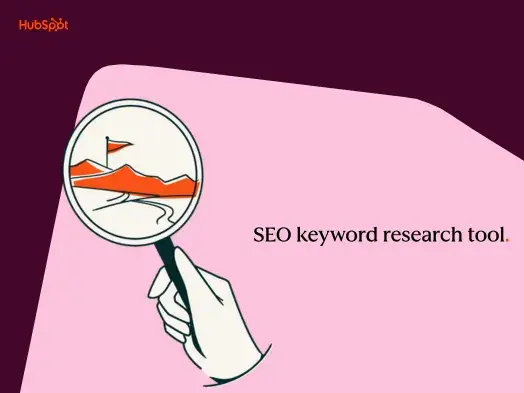Here’s a look at eight SEO challenges brands are facing in 2023.
Top 8 SEO Challenges in 2024
1. Staying ahead of algorithm changes.
HubSpot surveyed 400+ web traffic analysts to identify top SEO challenges. The leading challenge — experienced by 50% of marketers — is staying on top of search engine algorithm changes.

This isn’t surprising — in 2020 alone, Google ran more than 500,000 experiments that led to 4,000+ changes to search. For many marketers, staying current with these changes is like hitting a moving target.
So how can you succeed when Google keeps moving the goal post? The key is to respond to these changes strategically.
First, remember that there’s no need to overhaul your entire SEO strategy in response to a minor change. Instead, your time is better spent staying on top of industry news. If a big algorithm change is on the horizon, the SEO industry will talk about it.
If a significant algorithm change does happen, wait for the dust to settle before making any moves. Why? In some cases, Google reverts to a previous version if an update doesn’t go to plan.
If you’ve spent time and effort rebuilding your SEO plan from the ground up, you’ll have to spend more time and money undoing the change.
2. Not ranking higher in search results.
Unlike paid search, SEO takes time to show results — and it’s usually a result of smaller efforts.
There are some “solutions” to fix a low ranking, such as pivoting to technical SEO and content marketing. SEO experts have also identified some factors that play into your ranking, like the E-E-A-T framework. E-E-A-T in SEO stands for “experience,” “expertise,” “authoritativeness,” and “trustworthiness.”
However, even more important is developing a long-term strategy that focuses on a handful of initiatives at a time. Remember, SEO is a long-term game. The work you put in today will pay off down the road.
Consider a recent Google search update that may be prioritizing “AI-generated crap” over human-written text. While this type of update can temporarily depress search engine rankings, changes from Google in response to search results and user feedback will prompt further changes.
3. Focusing too much on keywords.
Keywords matter, but they’re not enough to get your site on page one of Google search. Consider a company that provides mobile car detailing services.
If they spend time and money ranking for terms such as “mobile car detailing,” “car detailing at my home,” and “car cleaning service near me,” they’ll see an initial boost in search rankings.
But this lift will be short-lived if Google crawls their site and discovers that it’s full of outdated, irrelevant content.
The result? Moving up the search ladder requires a mutli-metric focus.
According to recent HubSpot survey data, just 17% of SEO professionals said that SERP rankings for targeted keywords were their top priority.
Leading the pack were sales, leads, and conversion rates (31%), total monthly visitors (30%), and click-through rates (28%).
4. Writing compelling titles and meta descriptions.
According to 400+ web traffic analysts, one of the most effective strategies for improving search ranking is writing compelling titles and meta descriptions. But writing catchy titles is easier said than done.

According to one recent study that analyzed 5 million headlines, emotional titles — either positive or negative — had a higher click-through rate (CTR) than neutral titles. In fact, both positive and negative titles improved CTR by approximately 7%. Additionally, web pages with meta descriptions get almost 6% more clicks than those without.
A word of caution here — while emotionally-charged titles can drive clicks, you run the risk of sounding like clickbait. For example, the same study found that “power words” — or words specifically designed to draw attention — can negatively impact CTR. Power words include terms like crazy, insane, and amazing. Use them sparingly, if at all.
5. Missing the mark on mobile.
Your SEO strategy should absolutely include mobile optimization.
Why? As you might expect, mobile devices account for a large chunk of web traffic — 58% to be exact — making it essential to approach your website with a mobile-first mindset.
In addition, Google now practices mobile-first indexing. This means Google uses the mobile version of your web pages when indexing and ranking pages.
The trend is clear — optimizing for mobile is key for traffic growth, SEO, and great user experience. It’s no surprise that almost 25% of companies invest in mobile as a top SEO tactic.
You don’t need to be a developer or have a large budget to optimize your website for mobile. Check out this helpful guide to learn how small tweaks can improve the mobile experience.
6. Leveraging video in search results.
If you Google “How to tie a knot,” the top search result is a video:

You can see this in action with a simple search of your own. Google a question, and see what comes up.
The first 3-4 results? Videos. It makes sense: Data shows that 75% of people watch short-form videos on their mobile devices, and are 52% more likely to share videos than any other content.
Google plans to surface videos by crawling and indexing them like any other type of content. So how can marketers leverage their video content for search? Here are a few strategies:
- Add video chapters. Chapters section your video by topic, providing a layer of context for viewers. It also makes it easy for Google to understand the content in your video and use different clips in search results.

- Optimize your title, tags, and description. Like web pages, videos also have titles, descriptions, and tags. Optimize these using SEO best practices.
Also, embedding videos into your website and blog posts doesn’t hurt — and can actually improve your bounce rates.
7. Incorporating generative AI.
Generative AI tools such as ChatGPT have made market waves since their debut in late 2022.
While worries about the full-blown takeover of SERPs by AI-driven content are unfounded, there’s no doubt that artificial intelligence plays a role in the future of search.
Consider that 74% of web analysts now say that content made with AI assistance performs better, and 65% say it ranks higher on SERPs.
The near future may also see generative AI directly integrated with search functions — 68% of professionals say their blog would see more traffic as a result.
What does this mean in practice? That companies need to find a balance between human and AI content. Posts and articles that are entirely generated by AI may provide an immediate search boost, but don’t have the authority to stand the test of time.
Human-created pieces, meanwhile, may not make best use of emerging trends. By using AI to generate topics or provide basic article structures which are then handled by humans, businesses can get the best of both worlds.
8. Optimizing for voice.
50% of the U.S. population now uses voice search daily. It makes sense — with tools such as Google Home, Amazon Alexa, and Apple HomeKit continually adding new functions and features, voice search isn’t just a way to find information.
Users can add payment methods and purchase items directly from their smart devices. The caveat? Finding what they’re looking for on the first try.
To help navigate the increasing importance of voice, companies need to optimize their content for natural-language queries.
For example, website content should be well-structured, easy to read, and contain high-value keywords. This is because voice searches typically start with a scan of webpages — if smart devices can’t easily parse the information available, they’ll move onto the next result.
By making the site voice-friendly, brands are better positioned to capture this growing search market.
Solving for SEO
In 2023, there’s no single, simple solution for SEO.
That’s because great search engine optimization isn’t just about keywords. Instead, it’s a combination of factors that help create a consistent experience for users, from initial search to first impressions to eventual action.
The result? Solving for SEO is an ongoing effort. In 2023, top priorities include incorporating new search algorithms, effectively incorporating video, and leveraging the power of generative AI.
New years will bring new challenges, but with a solid SEO foundation businesses are better-equipped to navigate the evolving nature of search.
SEO







.png)




.jpg)